Human Hair Extensions: Different Types & What They Are Used For
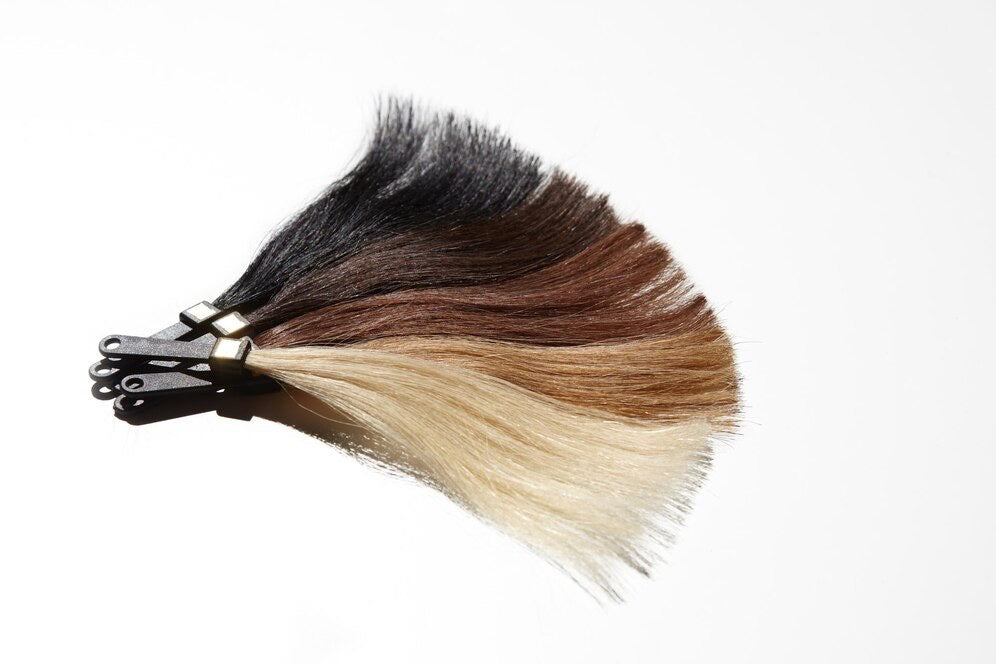
Key Takeaways
- Unlike synthetic options, human hair extensions blend seamlessly with your natural hair, allowing you to style, color, and treat them just like your own strands.
- While synthetic extensions may be cheaper upfront, human hair extensions last longer (up to a year or more with good care) and maintain a soft, smooth texture over time.
- From clip-ins and tape-ins to microlinks and wigs, the different types of human hair extensions offer flexibility, customization, and styling freedom without damaging your hair.

Human hair extensions
Looking for high-quality, natural-looking extensions?
Explore premium human hair extensions designed for every lifestyle and hair type at Livicor Hair, where beauty meets lasting quality.
Human Hair Extensions vs. Synthetic Hair Extensions
Before diving into the different types of hair extensions and how they’re applied, let’s start with the basics: the hair itself. Hair extensions generally fall into two main categories: real human hair extensions and synthetic hair extensions. And yes, they’re very different in how they look, feel, and hold up over time.
Human hair extensions are made from real, donated hair. That means they look, feel, and behave just like your own natural hair, because they are real hair. One of the most sought-after types of human hair is Remy hair, which means all the hair strands are aligned in the same direction, just like they grew naturally. This helps prevent tangling and keeps the hair feeling soft and smooth.
Synthetic hair extensions, on the other hand, are made from man-made fibers. These fibers are created to mimic human hair, but they’re typically made of plastic-like materials. While they may look fine at a glance, they don’t behave like real hair. They’re usually stiffer, shinier, and don’t blend as seamlessly with your hair.

Human hair and synthetic hair are different. Source: LinkedIn
See more: How Do Hair Extensions Work? Step-by-Step Process
Look, Feel & Blend
Let’s talk about how each type looks and feels in everyday life.
- Human hair extensions blend naturally with your hair. They’re soft, flow like real hair, and are easy to style.
- Synthetic hair extensions may look okay at first, but they often have an unnatural shine and don’t move the same way. They can feel coarse or wiry to the touch, and can be more noticeable, especially in bright lighting or wind.
Can You Style Them?
This is where human hair extensions really shine.
- You can curl them, straighten them, blow-dry them, and even dye them (just like your natural hair).
- Synthetic hair extensions don’t hold up well to heat or chemicals. Using hot tools can melt them, and dyeing them usually isn’t possible. Even daily friction or exposure to sunlight can wear them down quickly.

Human hair extensions vs synthetic hair extensions can be styled differently. Source: UNice Hair
How Long Do They Last?
- Synthetic extensions might last a few months if you’re super careful. But they tend to wear out quickly, especially if exposed to heat or friction.
- Human hair extensions can last up to a year or more, sometimes even longer, if you take good care of them.
That’s why many people see them as a better long-term investment, especially if you wear extensions often.
Cost: Budget vs. Quality
-
Synthetic hair is much cheaper upfront. If you only need extensions for a short time (like a weekend event or photo shoot), they might do the trick.
Human hair is more expensive, but you get what you pay for: better quality, longer wear, and the ability to style and treat it just like your own hair.
Different Types Of Human Hair Extensions
1. Clip-In Hair Extensions
Clip-in human hair extensions are one of the most popular and beginner-friendly options. These come in wefts with tiny clips attached to the base, so all you have to do is section your hair and clip them in. No glue, heat, or special tools are required, which means they’re also the least damaging of all the types of human hair extensions.
Perfect for special occasions or quick daily styling, clip-ins give you instant volume and length without commitment. You can take them out at night and pop them back in the next day. Since they’re made of real human hair, you can curl, straighten, or dye them, just like your own.
These types of human hair only need to be washed every 15 to 20 wears, making them super low-maintenance. With good care, clip-ins can last from 6 months to over a year. They’re ideal for anyone who wants flexibility without a permanent change.

Livicor Hair’s clip-hair extensions. Source: Livicor Hair
Check out: Straight Clip-in Hair Extensions
2. Tape-In Hair Extensions
Tape-in extensions are thin wefts of human hair that come pre-taped and are applied close to your roots. A stylist sandwiches a section of your hair between two sticky strips to attach the extensions. This technique creates a smooth, flat finish that blends naturally with your hair.
These types of human hair extensions are lightweight and comfortable, making them a go-to for those who want a semi-permanent look that doesn’t feel heavy. However, they do require careful maintenance; oily products near the roots can cause the adhesive to slip or loosen.
Since tape-ins stay in place for 4 to 8 weeks, they’re ideal if you want long-term results but aren’t ready for a full-time commitment. They’re reusable too, as long as the hair is kept in good condition.

Livicor Hair’s Natural Wavy Tape-in Hair Extensions Source: Livicor Hair
Among the different types of human hair applications, tape-ins strike a great balance between convenience, comfort, and style, perfect for women who want that everyday glam.
See more: How to Remove Tape In Extensions at Home (Expert Tips)
3. Sew-In Hair Extensions (Weaves)
Sew-in extensions, often called weaves, involve braiding your natural hair into cornrows and then sewing in the human hair extensions with a needle and thread. This method is most popular among people with thicker or coarser hair textures because it offers a secure and long-lasting solution.
These types of human hair extensions are favored for their durability and ability to hold up to active lifestyles. Since the hair is tightly secured to your braids, there’s very little chance of slippage. However, the process can take several hours, and the tight braiding may feel heavy or uncomfortable at first.
Sew-ins require good scalp care, moisturizing, and deep conditioning regularly are essential. Washing with protein-rich shampoos can also help maintain the health of both the extensions and your natural hair. While sew-ins last up to 6 to 8 weeks, it’s best not to exceed 4 months, as longer wear can hinder your own hair’s growth and health.

Sew-In Hair Extensions. Source: YouTube - Baciami® Hair Extensions & Education
4. Fusion & Pre-Bonded Hair Extensions
Fusion or pre-bonded extensions use heat and keratin-based glue to attach small bundles of human hair directly to your natural hair strands. A stylist uses a heat clamp or bonding tool, similar to a hot glue gun, to melt the glue and fuse the extension to your own hair.
This method delivers a seamless, natural look that lasts for months, but it’s one of the most time-intensive and potentially damaging types of human hair extensions. It takes around 3 to 4 hours to apply and needs a professional to do it safely. The glue and heat involved can lead to breakage or irritation if not done properly.
Despite the risks, fusion extensions are popular for their long-lasting results and versatility. They can be washed and styled like your real hair. They typically need repositioning every 2 to 3 months to keep them close to the scalp as your natural hair grows. With proper care, they can last up to 4 months.
5. Microlink Hair Extensions
Microlink extensions, also known as microbead or micro loop extensions, involve attaching small strands of human hair to your natural hair using tiny silicone-lined beads. A stylist uses a special tool to clamp the beads securely in place; no glue or heat is needed.
These types of human hair extensions offer a flexible, semi-permanent option that can last up to 4 months. They’re a great middle ground for people who want something more durable than clip-ins but less invasive than fusion extensions.
Because there’s no heat or adhesive involved, microlinks are considered less damaging. However, they must be installed properly. If beads are clamped too tightly, they can cause tension and hair breakage. It’s also important to get them adjusted every 2 to 3 months as your natural hair grows.
Microlinks blend beautifully and move naturally, making them a favorite for adding volume and length without compromising hair health, if applied and maintained correctly.

Kinky Curly Micro Ring Hair Extensions. Source: Livicor Hair
See more: 5 Best Hair Extensions for Thin Hair or Fine Hair
6. Wigs & Hair Pieces
Wigs and hair pieces are a versatile option in the world of types of human hair extensions. Wigs are full hair systems that cover your entire scalp, while hair pieces (like ponytails, buns, or toppers) are used to add volume or cover thinning areas.
Wigs are perfect for those dealing with hair loss, medical treatments, or just wanting to experiment with different styles without touching their natural hair. Lace-front wigs, in particular, create a very natural hairline and are popular among celebrities and everyday wearers alike.
Hair pieces, on the other hand, are great for quick styling solutions, just clip them in to change your look in seconds.
Both wigs and pieces come in synthetic and human hair extensions options. Human hair wigs can be washed, styled, and colored just like real hair, but they require gentle care and proper storage to stay in top condition.
How To Care For Your Hair Extensions
Whether you’re rocking clip-ins, tape-ins, or a full weave, hair extension care is just as important as caring for your natural hair, or maybe even more. When properly maintained, your extensions can look beautiful, stay tangle-free, and last much longer. Here's how to care for your hair extensions the right way:
1. Be Gentle When Brushing
No matter what type of hair extensions you have, always brush gently to avoid breakage, both to your natural hair and the extensions. Start at the end, then work your way up. This detangling method prevents tugging at the root and protects the bonds or clips.
Use a wide-tooth comb or a soft-bristle brush designed for extensions. And never brush your hair when it's soaking wet, especially if you have tape-in or bonded extensions, as the added weight can weaken the bonds.
2. Limit Washing & Keep Them Dry
If you have permanent extensions like tape-ins, fusion, or sew-ins, you don’t need to wash your hair as often; usually, once or twice a week is enough. Overwashing can dry out the extensions, which don’t receive natural scalp oils like your real hair does.
After washing, do not leave your extensions dripping wet. Air-drying might sound harmless, but it can weaken glue and tape bonds. Instead, gently blot with a microfiber towel and blow-dry on low heat. Focus on drying the roots first to protect the bonds.

Keep your hair extensions dry
3. Avoid Chlorine and Saltwater
Chlorine and saltwater are not your hair’s best friends. They can dry out and tangle your extensions, especially human hair extensions. Even worse, they can break down the glue or adhesive in tape-ins and bonded styles.
If you’re swimming, wear a protective swim cap or avoid getting your hair wet. For clip-ins or halos, it’s best to remove them before heading into the water.
4. Heat Style With Care
Yes, you can curl, straighten, and blow-dry human hair extensions, but be smart about it. Always apply a heat protectant and avoid using high heat. This keeps both your natural and extension hair healthier in the long run.
Never apply heat near the roots or bonds. A good rule of thumb is to treat everything from the earlobe down as your styling zone. Heat near the top can damage the adhesive or beads and cause your extensions to slip out early.
See more: How to Dye Hair Extensions Without Damage? (Expert Guide)
5. Nighttime Protection
Protect your extensions while you sleep. Loose braids, silk or satin pillowcases, or even a silk bonnet can help reduce friction and tangling overnight. This simple habit can make a big difference in how long your extensions last.
6. Pay Attention to Signs of Damage
If your extensions start to pull or you notice breakage, don't ignore it. Hair extensions should never cause pain or visible damage to your natural hair. If you notice thinning or tension at the scalp, it’s time to check in with your stylist.
And if some damage does occur, there are repair treatments available, such as deep conditioning masks, protein treatments, and even trimming split ends can help you bounce back.
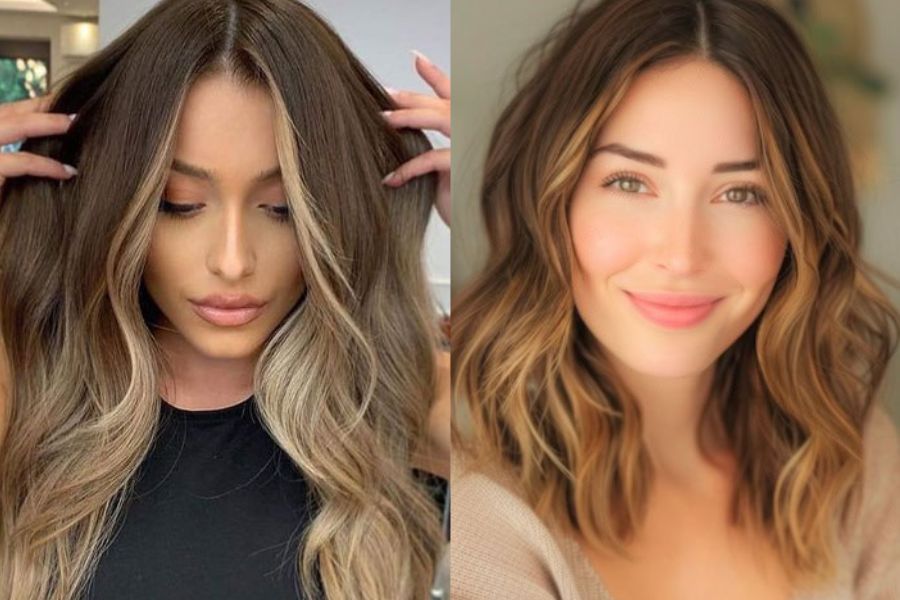
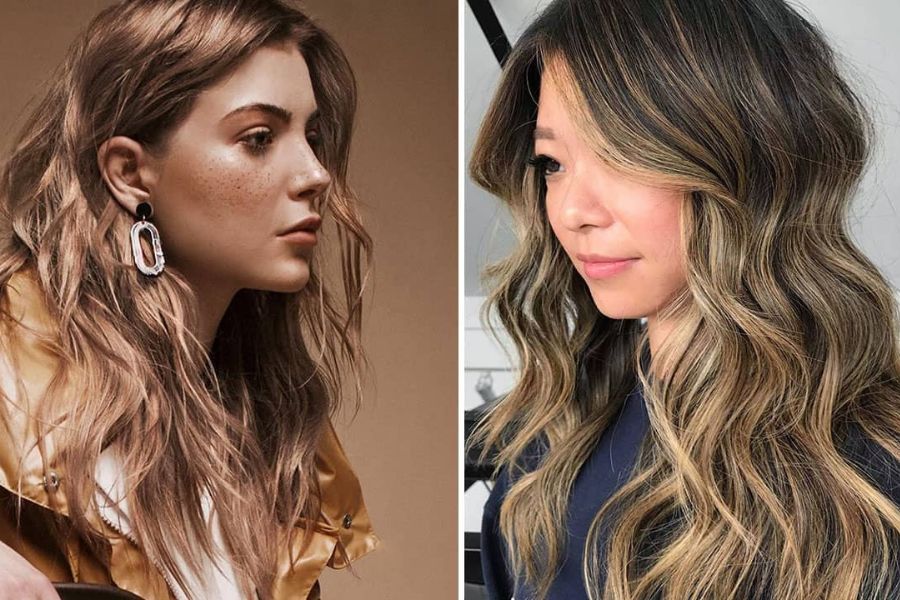



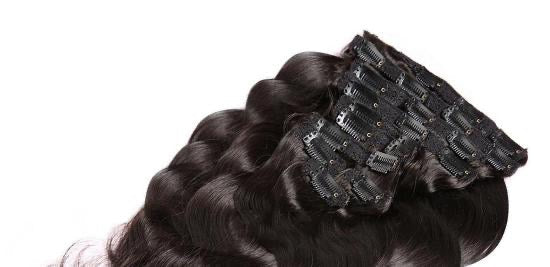
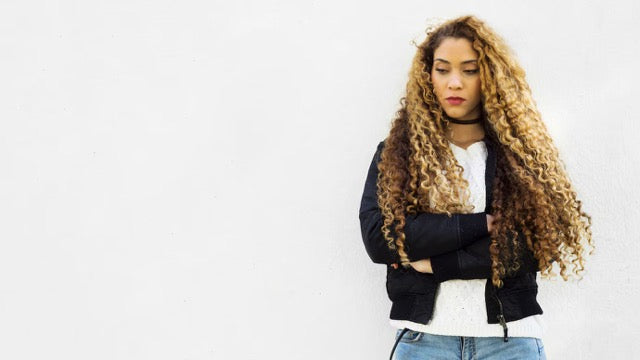
Comments